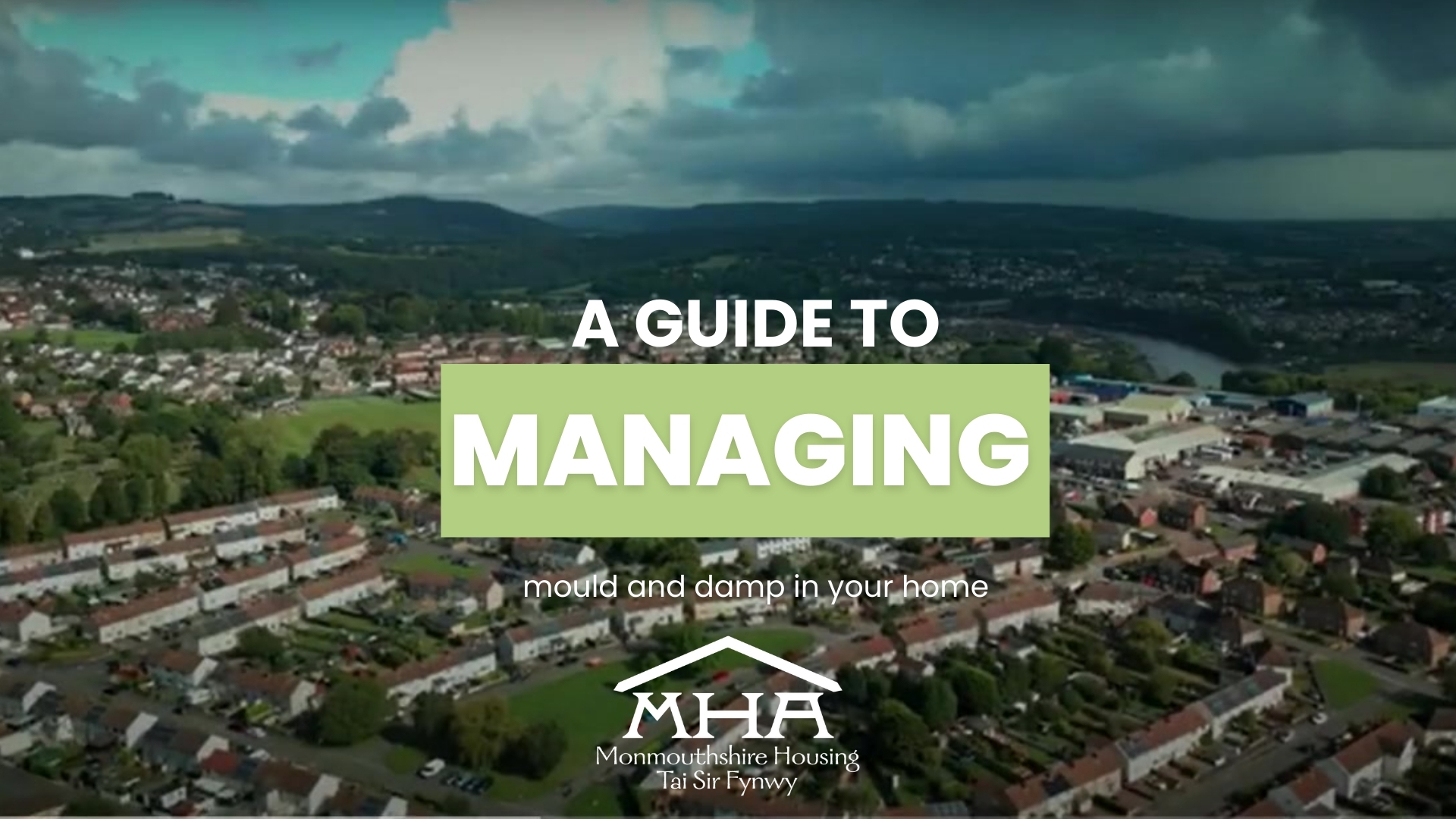Page Contents
Types of damp
There are three types of damp, all of which can contribute to mould in the home:
Please refer to our Damp, Mould and Condensation leaflet and video for more information and advice.

Preventing condensation
You can help produce less moisture and remove the moisture from the home by doing the following:
- Keep lids on saucepans when cooking.
- Ensure tumble dryers are vented to the outside.
- Close the kitchen and bathroom doors when there is moisture in the air.
- Ensure you turn your extractor fans on to remove the moisture in the air.
- Dry clothes outside wherever possible or dry in a well-ventilated room.
- Increase the ventilation in your home by opening window trickle vents.
- Increase ventilation around the home by ensuring furniture is kept away from the wall.
- Do not cover radiators with towels, tea towels or clothes.
- Raise the temperature in your home, ensuring all radiators give out some heat when your heating is on.
Preventing mould growth & dealing with mould in your home
Mould forms where a surface has water on it and becomes damp. To prevent mould from forming, you or your family can help by wiping down condensation that forms on windows, window frames and window sills.
You might also see moisture on cold surfaces, for example tiles in the bathroom and kitchen, wipe these surfaces down to remove the moisture and prevent mould build up.
Mould looks like small black, grey, or green spots on the wall or on other surfaces in your home. If you already have mould on your walls and/or ceiling an effective method to clean it off is to use a fungicidal wash which can be purchased from most hardware stores and online.
Using the correct product helps remove the persistent stain it can leave behind. Always follow the manufacturer’s instructions.
Our Promise
We want to provide and maintain safe, healthy, affordable and warm homes free from damp, mould or disrepair for all our customers, therefore any tenant experiencing damp or mould in their home, we promise:
- To treat all reports of damp or mould seriously.
- We will arrange with you a time to visit and thoroughly inspect your home, so we can advise and help.
- We will physically inspect every case reported, using specialist equipment if required, to help identify the likely cause of damp.
- To prioritise cases where there are people living in a home who have health concerns or other vulnerabilities that could be made worse by mould.
- To take a caring and supportive approach, recognising that having mould in a home can be distressing.
- To carry out any repairs related to damp or mould to minimise damage.
- To provide tenants with practical information about how to minimise condensation where this is contributing to mould forming.
What to do if your Housing Association hasn’t fixed a problem in your home?
Community Housing Cymru, in partnership with TPAS Cymru and Welsh housing associations have worked together to develop a resource to help tenants understand the steps they should take if you are not satisfied that a problem in your home has been sorted. This factsheet outlines the options available to you if you are not happy with the service you receive from MHA.


